IRF
IRF Uppsala
RPF programme
IRF-U Staff
Seminars
Courses
PhD studies
Examensarbete
Workshops
Cluster
...EFW
...Quicklook
Cassini
Rosetta
Solar Orbiter
Intranet
| INSTITUTET FÖR RYMDFYSIK | UPPSALA |
 |
|
| Swedish Institute of Space Physics | (59°50.272′N, 17°38.786′E) |
Master Project (30 c)/Masterprojekt (30 hp)
Plasma density variations in the ionosphere
and their effects on trans-ionospheric signals:
an investigation using Swarm satellite data
and Lantmäteriet’s ionosphere monitor
Student: Arthur Cherry,
Uppsala UniversitySupervisor: Stephan Buchert
Period: 2023-2024
Abstract
We study plasma density variations within the ionosphere and their effects on trans-ionospheric signals, with a geodetic focus on Sweden from 2014 to 2023. We look for temporal, spatial, seasonal, and solar cycle patterns. We also discuss the percentage of occurrence of ionospheric irregularities and GNSS signal disturbances within the data at hand. We use in situ data collected by ESA-Swarm satellites and ground data provided by the Lantmäteriet-Swepos network ionosphere monitor. We find that high-latitude regions are susceptible to displaying more irregular electron density fluctuations (i.g., polar cap patches) than mid-latitudes. We also find that GNSS signal interference resulting in increased receivers’ positioning uncertainty is predominant at high latitudes. On the other hand, increased positioning uncertainty may be detected at noon in mid-latitude regions, mainly due to solar radiation exposure. Furthermore, hourly geomagnetic effects at high latitudes induce enhanced electron density fluctuations and positioning uncertainty at night. Findings also show more electron density fluctuations around winter and less in summer. Moreover, we find that the solar cycle influences the intensity of electron density fluctuations and positioning uncertainty, with the seasonal effects being more pronounced during periods of increased solar activity. Finally, results show that when ionospheric irregularities are observed, disturbances in GNSS signals may be detected, leading to imprecision in positioning services. Furthermore, we see that the absence of ionospheric irregularities results in a generally safe path for GNSS signals, which is beneficial for positioning accuracy. This comprehensive research enhances our understanding of ionospheric behavior in higher latitude environments and its impact on GNSS signals. Future research in this field could go deeper into the specific mechanisms driving electron density fluctuations and scintillation effects, explore additional geographic regions, and consider longer periods to refine our understanding of ionospheric dynamics and its implications for advanced space weather forecasting and satellite system resilience.Results
Final report
![[Swarm]](../../img/swarm.jpg)
The Swarm satellites, each carrying two IRF Uppsala Langmuir probes providing the in situ plasma density measurements used in this work.